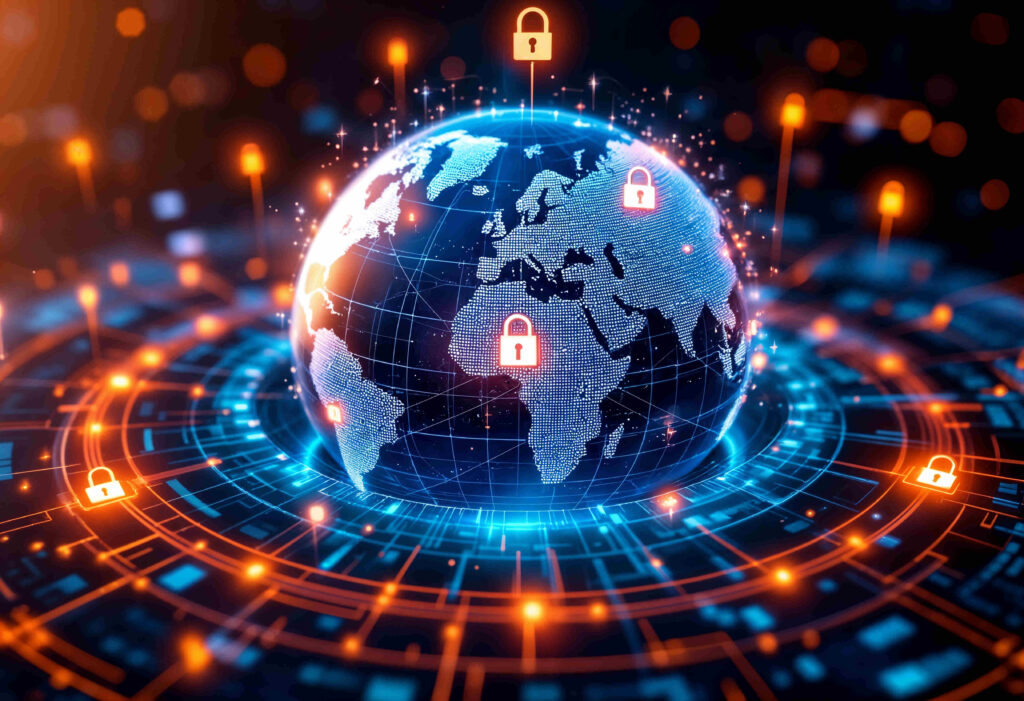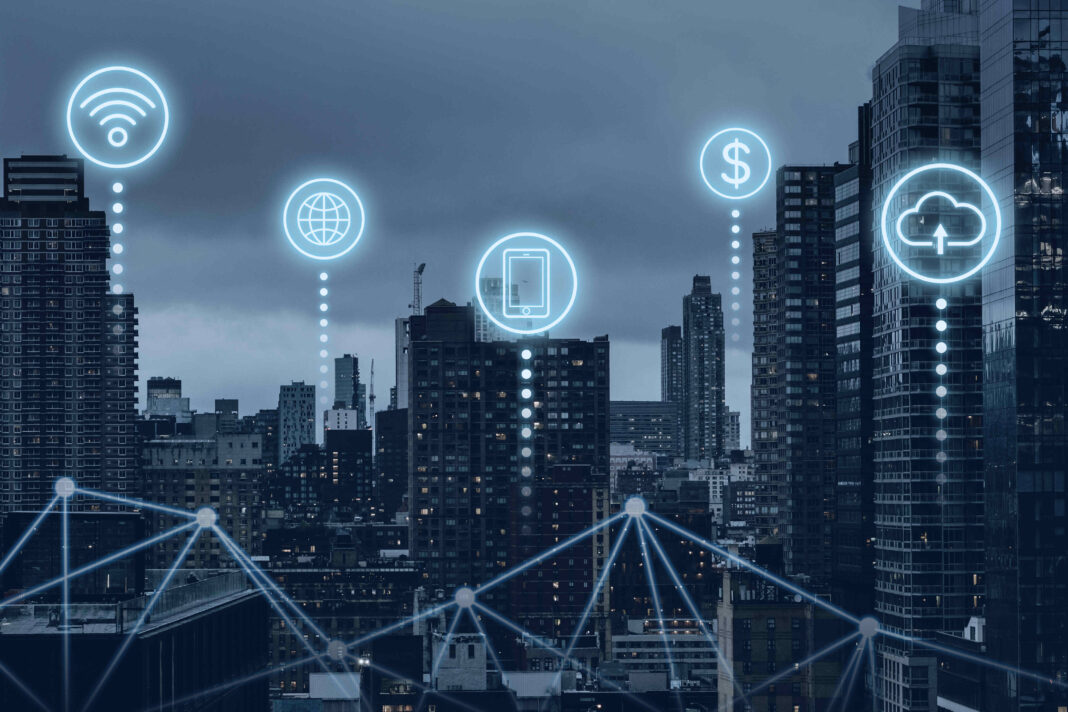The advent of 5G technology has revolutionized connectivity, offering unprecedented speed, low latency, and the ability to connect billions of devices simultaneously. However, with these advancements come significant cybersecurity challenges and opportunities. As 5G networks become more pervasive, they introduce new vulnerabilities that cybercriminals can exploit. At the same time, 5G also provides tools and capabilities that can enhance cybersecurity measures. This article explores the dual role of 5G in cybersecurity, examining the challenges it poses and the opportunities it creates for securing digital ecosystems.

5G Technology
What is 5G?
5G, or the fifth generation of wireless technology, represents a significant leap from its predecessor, 4G. It offers faster data speeds, reduced latency, and the capacity to support a massive number of connected devices. These features make 5G a cornerstone for emerging technologies such as the Internet of Things (IoT), autonomous vehicles, and smart cities.
Key Features of 5G
- Enhanced Speed: 5G can deliver data speeds up to 100 times faster than 4G, enabling real-time communication and data transfer.
- Low Latency: With latency as low as 1 millisecond, 5G is ideal for applications requiring immediate response, such as remote surgery or industrial automation.
- Massive Device Connectivity: 5G can support up to 1 million devices per square kilometer, making it suitable for densely populated areas and IoT ecosystems.
Cybersecurity Challenges Introduced by 5G
Expanded Attack Surface
The proliferation of connected devices under 5G networks significantly expands the attack surface for cybercriminals. Each connected device represents a potential entry point for malicious actors, increasing the risk of cyberattacks.
Vulnerabilities in IoT Devices
Many IoT devices lack robust security features, making them easy targets for hackers. In a 5G-enabled environment, compromised IoT devices can be used to launch large-scale attacks, such as Distributed Denial of Service (DDoS) attacks.
Network Slicing and Security Risks
5G introduces the concept of network slicing, where a single physical network is divided into multiple virtual networks. While this allows for customized network services, it also creates new security challenges. Each network slice must be individually secured, and a breach in one slice could potentially compromise the entire network.
Increased Complexity of Network Infrastructure
5G networks rely on a complex infrastructure involving multiple components, such as small cells, edge computing, and cloud-based services. This complexity makes it difficult to monitor and secure the entire network, leaving gaps that cybercriminals can exploit.
Supply Chain Vulnerabilities
The global nature of 5G supply chains introduces additional risks. Components and software from different vendors may have varying levels of security, creating potential entry points for cyberattacks.
Opportunities for Enhancing Cybersecurity with 5G
Improved Encryption and Authentication
5G networks incorporate advanced encryption and authentication protocols, making it more difficult for cybercriminals to intercept or manipulate data. Enhanced security features, such as mutual authentication between devices and networks, help prevent unauthorized access.
Network Slicing for Enhanced Security
While network slicing presents challenges, it also offers opportunities for improving cybersecurity. By isolating critical services on separate network slices, organizations can minimize the impact of a potential breach. For example, a compromised IoT device on one slice would not affect critical infrastructure on another.
Edge Computing and Real-Time Threat Detection
5G enables edge computing, where data is processed closer to its source rather than being sent to a centralized cloud. This reduces latency and allows for real-time threat detection and response. Security systems can analyze data locally and take immediate action to mitigate threats.
AI and Machine Learning Integration
The high-speed, low-latency capabilities of 5G make it an ideal platform for integrating artificial intelligence (AI) and machine learning (ML) into cybersecurity systems. These technologies can analyze vast amounts of data in real time, identifying patterns and anomalies that may indicate a cyber threat.
Case Studies: 5G and Cybersecurity in Action
Case Study 1: Securing Smart Cities
Smart cities rely on 5G to connect various systems, such as traffic management, energy grids, and public safety. However, these systems are prime targets for cyberattacks. By leveraging 5G’s advanced encryption and network slicing capabilities, cities can create secure, isolated networks for critical services, reducing the risk of widespread disruption.
Case Study 2: Protecting Autonomous Vehicles
Autonomous vehicles depend on 5G for real-time communication with other vehicles and infrastructure. A cyberattack on these systems could have catastrophic consequences. 5G’s low latency and edge computing capabilities enable real-time threat detection and response, ensuring the safety and security of autonomous vehicles.
Best Practices for Securing 5G Networks
Implement Robust Encryption
Organizations should ensure that all data transmitted over 5G networks is encrypted using the latest standards. This prevents unauthorized access and data breaches.
Regularly Update and Patch Devices
Frequent updates and patches are essential for addressing vulnerabilities in connected devices and network components. Organizations should establish a regular maintenance schedule to keep their systems secure.
Conduct Comprehensive Risk Assessments
Regular risk assessments can help identify potential vulnerabilities in 5G networks. Organizations should evaluate their entire ecosystem, including devices, software, and supply chains, to ensure comprehensive security.
Collaborate with Industry Stakeholders
Cybersecurity is a shared responsibility. Organizations should collaborate with industry stakeholders, including vendors, regulators, and other businesses, to develop and implement best practices for securing 5G networks.
Frequently Asked Questions (FAQ)
1. How does 5G improve cybersecurity?
5G enhances cybersecurity through advanced encryption, network slicing, and real-time threat detection capabilities. These features make it more difficult for cybercriminals to intercept data or launch attacks.
2. What are the main cybersecurity risks associated with 5G?
The main risks include an expanded attack surface due to increased device connectivity, vulnerabilities in IoT devices, and the complexity of 5G network infrastructure.
3. Can 5G networks be hacked?
While no network is completely immune to hacking, 5G’s advanced security features make it more resilient to cyberattacks compared to previous generations of wireless technology.
4. How can organizations protect their 5G networks?
Organizations can protect their 5G networks by implementing robust encryption, regularly updating devices, conducting risk assessments, and collaborating with industry stakeholders.
5. What role does AI play in 5G cybersecurity?
AI and machine learning can analyze vast amounts of data in real time, identifying patterns and anomalies that may indicate a cyber threat. This enables faster and more effective threat detection and response.
Conclusion
5G technology represents a double-edged sword in the realm of cybersecurity. While it introduces new challenges, such as an expanded attack surface and increased network complexity, it also offers powerful tools for enhancing security. By leveraging 5G’s advanced features, organizations can build more resilient and secure digital ecosystems. As 5G continues to evolve, it is crucial for businesses, governments, and individuals to stay informed and proactive in addressing cybersecurity risks.
The future of cybersecurity in a 5G-driven world depends on collaboration, innovation, and a commitment to best practices. By taking these steps, we can harness the full potential of 5G while minimizing its risks.

